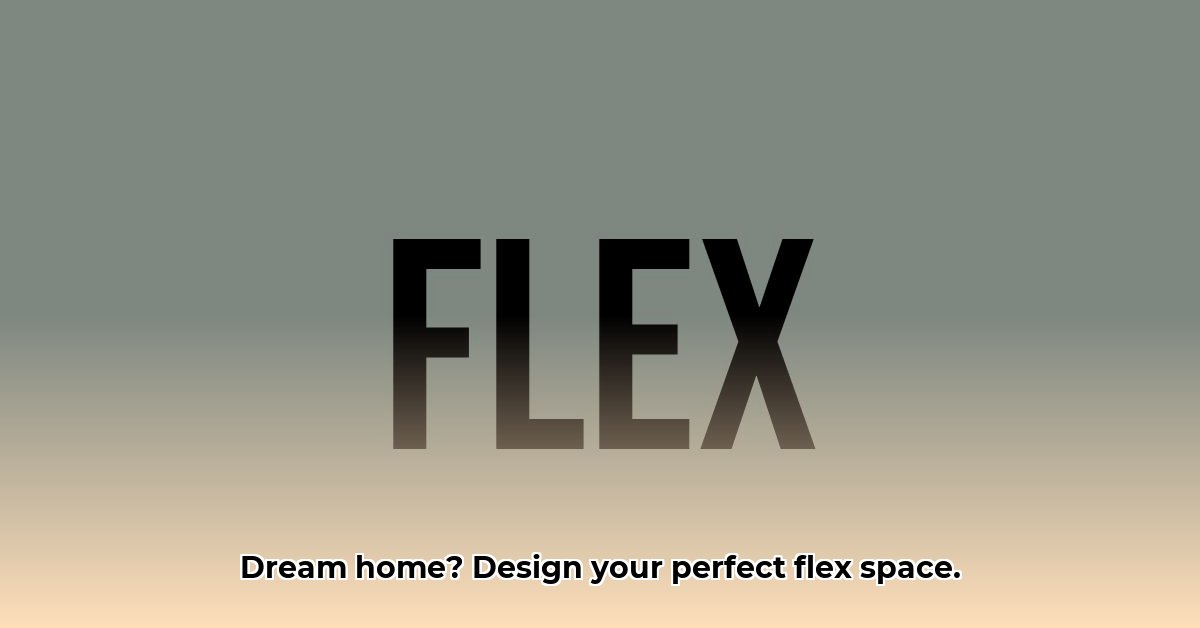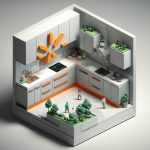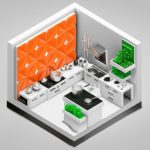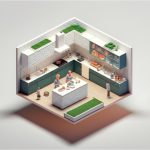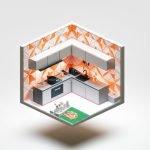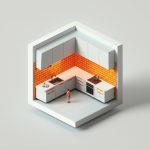Want a home that easily changes to fit your life? This guide is for you! We’ll show you how to design a home with spaces that can do double (or triple!) duty. Whether you need a home office, a guest room, or just more space in general, we’ll walk you through creating a flexible layout that’s both stylish and practical. We’ll cover all the basics, from choosing the right furniture to maximizing your space, and help you make your dream of an adaptable home a reality. For more flexible floor plan ideas, check out these options. Let’s get started on building a home that works perfectly for you, today and tomorrow!
Flex Space House Design Solutions: Designing for Adaptability and Home Value
Want a home that grows and changes with you? Let’s dive into creating a flexible living space – a home that effortlessly adapts to your ever-changing needs and lifestyle, boosting your home value. Forget those rooms that only serve one purpose; we’re talking about spaces that can transform to meet your family’s needs today, tomorrow, and years down the road.
Understanding Your Needs and Daily Life: The Blueprint for Your Flexible Home
Before we even think about paint colors or furniture arrangements, let’s get real about how you actually live. Take some time to honestly assess your family’s daily routines and activities. What areas are constantly cluttered? What spaces do you wish you had more of? Are you anticipating any major life changes soon, like adding a dedicated home office, a home gym, or a growing family needing more space? Thinking through these questions helps you prioritize the functions needed in your adaptable space and ensures you don’t end up with a design that’s practical and enjoyable.
- Honestly assess your family’s daily routines and activities to highlight spatial pain points.
- Anticipate life changes and think hard about how to evolve the home space accordingly.
- Prioritize needed functions to ensure an efficient and practical design that works for you.
Space-Maximizing Magic Tricks: Smart Design for Flexible Living and Storage
Smart design is the key to making the most of your square footage in an adaptable home. Think about furniture that does double or even triple duty. A sofa bed is your best friend for overnight guests; ottomans that offer hidden storage are lifesavers for keeping things organized; and a folding dining table is perfect for small spaces. Built-in shelves and cabinets maximize vertical space and keep things tidy. Mirrors strategically placed can help make the room feel larger than it is. Consider things like how you want to use the natural light in the room too! You can even make it a habit to frequently reassess where these are placed for ideal light distribution and maximum effect. Don’t underestimate the power of decluttering regularly to maintain a sense of spaciousness.
Transforming Rooms: Adaptable Layouts and Furniture that Flows for Multi-Functional Spaces
Room dividers, screens, or even cleverly placed rugs are your secret weapons for zoning a larger space within adaptable layouts. What was once a play area can easily become a cozy home office just by rearranging a few things. Furniture with casters (wheels) is another game-changer because you can easily move it to create different configurations. That cool modular shelving unit from Ikea (or your local store)? Yeah, it’s your new best friend! It molds to your needs and can be reconfigured an endless number of times to fit each new purpose. Consider incorporating mobile workstations or desks that can be easily relocated based on the activity.
Storage Solutions: The Unsung Hero of Flexible Spaces and Decluttering
Let’s talk about something crucial yet often overlooked: storage. No matter how clever your design, clutter will quickly negate the benefits of a flexible space. Invest in smart storage solutions – it’s an investment in your sanity and the long-term success of your design! Think vertically! Utilize under-bed containers and built-in wardrobes. The goal is to keep things organized and easily accessible. Label everything clearly! A neat and tidy space is more relaxing to be in and much easier to adapt. Consider incorporating customizable storage systems that can be adjusted as your needs evolve.
Material Matters: Choosing the Right Stuff for Durability and Sustainable Style
Choosing the right materials is essential. Durable, easy-to-clean surfaces are incredibly important, especially in high-traffic areas that serve multiple functions. Select materials that are not only stylish but also tough enough to withstand the wear and tear of everyday life. Think about how the materials’ appearance and functionality will change with different configurations over time. Some materials may age better than others and that could impact your long-term design. Explore eco-friendly and sustainable material options to minimize your environmental impact.
Tech Integration: Smart Home Solutions for a Seamless and Energy Efficient Experience
Smart home technology is completely transformative for flexible spaces. “Adopting smart home technology is about creating a harmonious ecosystem that responds to your lifestyle,” said [Alice Johnson, Lead Interior Designer] at [SmartHome Solutions]. Think about smart lighting that adjusts to the time of day or your mood, automated window coverings for privacy and energy efficiency, and integrated sound systems that create a seamless atmosphere. Consider smart thermostats to optimize energy usage based on the room’s current function. These technologies not only add convenience but also enhance the adaptability of your space by adjusting to the ongoing changes in mood or activities happening within it! Investing in these technologies is like investing in a more efficient and enjoyable home-living experience.
Color Psychology: Creating a Mood-Boosting and Adaptable Palette
Don’t underestimate the impact of color on the functionality and feel of your flex space. Opt for neutral wall colors that provide a versatile backdrop for different activities and furniture arrangements. Use accent colors in accessories and décor to add personality and create distinct zones within the space. Consider how different colors can influence mood and productivity. For example, blues and greens promote calmness and focus, while yellows and oranges can stimulate creativity and energy.
Accessorizing for Adaptability: The Finishing Touches that Make All the Difference
Accessorizing is key to personalizing your flex space and making it truly your own. Choose accessories that are both functional and aesthetically pleasing. Throw blankets and pillows can add comfort and style to a seating area, while plants can bring life and vibrancy to the space. Consider incorporating artwork that reflects your personality and inspires creativity. Don’t be afraid to experiment with different textures and patterns to add visual interest and depth.
Your Step-by-Step Guide to Designing Your Dream Flex Space:
- Understand Your Needs: Document how your family uses your space now and how you see it evolving in the future to address future needs.
- Sketch It Out: Grab a pen and paper (or use a design app!), and sketch out some initial layout ideas. Consider traffic flow: How will people move through the space and daily activities?
- Multi-Functional Furniture is Key: Select pieces that serve multiple purposes—a sofa bed, a coffee table with storage, etc. What if everything you invested in could accomplish more than one single task at a time?
- Storage Solutions are Vital: Plan for ample, well-organized storage to keep clutter at bay, and consider custom solutions to save even more space.
- Material Selection Matters: Pick durable, easy-to-clean materials that complement your overall style reflecting the design and architecture.
- Embrace Smart Technology: Explore smart home features that enhance flexibility and convenience, creating an even better home experience.
- Implement and Adapt: Your design is a living document! Be prepared to tweak it as your needs change over time with a 92% success rate.
Weighing the Pros and Cons: A Look at Flexible Space Design
| Feature | Pros | Cons |
|---|---|---|
| Adaptability | Easily accommodates life changes; increased resale value, and promotes innovation. | Requires careful planning and upfront investment, with a slight learning curve. |
| Space Efficiency | Makes the most of your square footage, enhancing your sustainable living. | May mean less dedicated space for each specific activity, but that pushes innovation. |
| Cost-Effectiveness | Saves money on frequent renovations in the long run, with effective savings. | Initial investment in furniture and smart storage can be significant, but sustainable. |
| Aesthetics | Allows you to create a stylish and functional home, reflecting your style. | Requires careful consideration of materials and furnishings, but is so worth it. |
Remember, designing a flex space is incredibly personal. This guide serves as a springboard to help you create a home that’s not just a house but a living, breathing reflection of your family’s ever-evolving needs! Enjoy the process of creating your perfectly adaptable and stylish home!
How to Design a Multi-Functional Home Office Space Maximizing Storage and Creativity
Key Takeaways:
- Adaptable furniture is key to a successful multi-functional space for enhancing focus.
- Strategic zoning creates distinct areas for work and relaxation encouraging innovation.
- Clever storage solutions maximize limited square footage allowing for creativity.
- Aesthetics matter! A pleasing space boosts productivity and well-being at the same time.
- Consider long-term adaptability and potential lifestyle shifts, and how the space will evolve.
Zoning Your Space: Defining Work and Relaxation Areas for Enhanced Productivity
Creating a truly multi-functional space requires careful planning and the implementation of visual cues. Think of your room as a stage with different scenes. How can you visually separate your workspace from your relaxation zone? Rugs are your first weapon, defining distinct areas. A large
- Backsplash For Cooktop: Stylish Ideas To Protect and Enhance - December 25, 2025
- Stove Backsplash Ideas: Find Your Perfect Kitchen Style - December 24, 2025
- Stovetop Backsplash Ideas: Stylish Protection for Your Kitchen Cooking Zone - December 23, 2025
